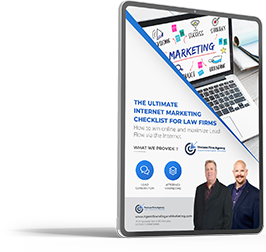
A successful insurance office requires happy, productive staff. But, the old adage is correct: Money doesn’t buy happiness – or an increase in productivity. While a person’s salary is, indeed, one of the primary factors in job satisfaction, it is only one piece of the equation. And not a very big piece, as it turns out.
Glassdoor, a website where employees rate employers anonymously, carried out a survey recently. They found, amongst other things, that a 10 percent increase in salary equaled just a 1 percent increase in job satisfaction. What’s more, there are diminishing returns for every $1,000 increase.
So what does all of this mean for you, the insurance agent looking for ways to boost productivity and job satisfaction in your office staff? It means looking at ways other than the usual salary increases and bonuses to boost morale and subsequently productivity.
A recent study conducted by British Land showed that when given the choice between two similar jobs, the workplace influenced 84% of respondents. Furthermore, many employees would take a 5.5% reduction in their reward package if it meant being able to work in the “ideal” office environment.
Exactly what the ideal office is will be vary between individuals, but the survey highlights the importance of paying close attention to the environment where your employees work. With that in mind, here are five ways you can transform your insurance office into a productivity-inspiring habitat for your staff.
Clean, Comfortable, and Well Decorated
The effects of office décor are often underestimated. But, there are many advantages to having a workplace that is clean, comfortable, and well-decorated. With certain modifications in this area, you can improve interactions between co-workers and managers as well as pave the way for visceral changes in attitudes as employees see a tangible investment in their well-being. Also, what’s the value of how clients, and prospective clients, will perceive this positive office environment? It’s priceless.
A more productive office doesn’t mean having to hire a professional designer. A fresh coating of paint, a few artistic designs on the walls, and some framed inspirational quotes might be just the thing your office staff needs to feel rejuvenated. Plants can work wonders to promote a positive vibe for your office.
Also, consider rearranging the office furniture and equipment in a way that is more conducive to the way people work. That means, for example, not putting the photocopier at the opposite end of the room to where the office manager sits. The person most likely to frequent the copier is your office manager, so placing the copier closer to their workstation would help to increase their productivity. Many successful agents have invested into a “desk-top” printer for each team member to ensure this very objective is reached for all employees. When you consider today’s costs, of an individual “desk-top” printer, it’s negligible
That one move could also help to minimize disruption to other people’s work. The employees will no longer need to traverse the length of the office every time he/she needs to make some copies.
The Right Insurance Office Lighting
Lighting goes hand-in-hand with office comfort level and décor. Poor lighting can cause eyestrain, blurred vision, and headaches – things which are not conducive to a productive insurance agency. The ideal work environment will have plenty of natural light, but of course, most offices are far from ideal in this respect.
If natural light is not an option, light fixtures with adjustable filters are a good option. Beware, though; overhead lighting can cause glare on computer screens, affecting a user’s vision just as harshly as dim lighting. Where possible, put lighting fixtures on walls or in areas not directly above workstations.
Proper lighting in the office is not only good for your office staff, but it could also have a positive impact on your company’s financials – as the following extract from an article on andrewjensen.net highlights.
“In the late 1980s, the lighting systems in the U.S. post office in Reno, Nevada were renovated to make them more worker friendly. The upgrade resulted in energy savings of about $50,000 per year, but the real improvements came in the form of employee productivity. Mail sorters in the facility became the most productive sorters in the western half of the country; machine operators boasted the lowest error rates and the financial impact of the productivity increase were expected to boost revenue by approximately $500,000 per year. And this wasn’t an isolated incident. Countless other companies across the country have also noted productivity increases as the result of lighting renovations.”
Good lighting adds to employee satisfaction and lifts the gloom of an office in more ways than one.
Space for Reflection and Relaxation

Providing an area for your staff to take a break and have some relaxation time is no doubt low on your list of priorities. After all, you are too focused on more important things, like getting the maximum productivity out of your employees, right?
It might come as a surprise to learn that inspiring a “take a break” mentality into your workforce is conducive to increased happiness and productivity. Several studies have indicated that frequent breaks throughout the workday help to boost staff creativity, focus, and work output. One recent study, published in the journal Cognition, suggests that employees would benefit from mini breaks as frequently as one every hour.
To get the most benefit from these recommended breaks, people need to move away from their desks and allow their brains to engage in other activities such as socializing, relaxation, or entertainment. For all of that, a break room is the perfect setting. Think of what happens at companies like Google and Facebook in this regard. They don’t just offer these perks just because there are nice people running these Silicon Valley firms.
You should create a space where your staff can go to interact with colleagues, read something unassociated with work, or simply relax and listen to some music for a few minutes. Then, they can return to their desks feeling refreshed and ready to produce top-quality work.
Increasing the number of scheduled breaks your office staff might seem counterintuitive to your goal of inspiring them to work more. All the evidence suggests, however, that allowing more downtime will boost the amount of meaningful work your employees produce.
Sprinkle in Some Spontaneity
Predictability in the work environment often leads to disengagement. One of the main reasons people become dissatisfied with their job is because of routine. While routine is a natural aspect of any job, over time staff can begin to feel unfulfilled and less stimulated.
One way to counteract that is to inject some spontaneity into the office. Simple things like calling impromptu meetings instead of the usual scheduling in advance can help to shake things up a little, as can the occasional surprise office-wide breaks in the middle of the day.
Routine will always be a fundamental aspect of the insurance office. But introducing something new and surprising periodically is a good way to keep your employees happy and stimulated. It is also good for talent retention. Boredom is one of the main reasons for people quitting a job.
Add a Little Flexibility
People who feel “chained” to their desk will inherently be less happy than those who can exercise some degree of freedom and flexibility in the workplace. Your employees have different needs and lifestyles, to which work often conflicts.
Allowing them to set their own working standards, to a degree, gives them a sense of autonomy and responsibility while at the same time reduces the friction between their work and personal life. Flexible hours, for example, is one way to help your employees achieve harmony with work and life. It can enable people with a preference for working certain hours of the day a chance to come to work when they are most productive.
In addition to flexible work time, you could consider allowing some employees to work from home, or in a coffee shop, or around the corner in the park – if it is not essential for them to remain in the office. Not everyone feels comfortable working in the office all the time, so you may find that cutting your staff loose from time to time will make your office more productive. As your team demonstrates an ability to handle more responsibility (hopefully they all do), give them more freedom and flexibility. Your bank account will thank you and your team.
Office environments are living things that need ongoing care and maintenance. Subtle tweaks and adjustments occasionally will help ensure a productive insurance office where people love to work.







